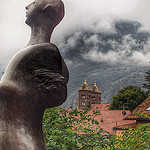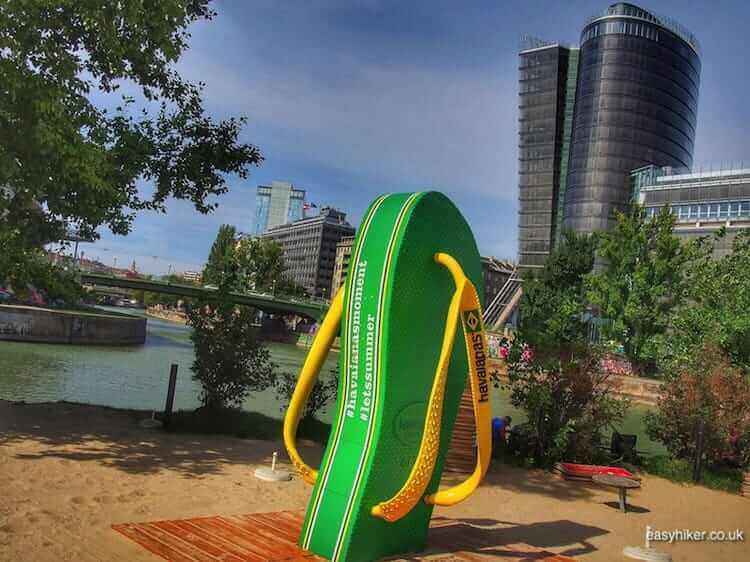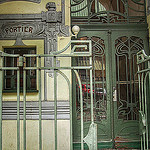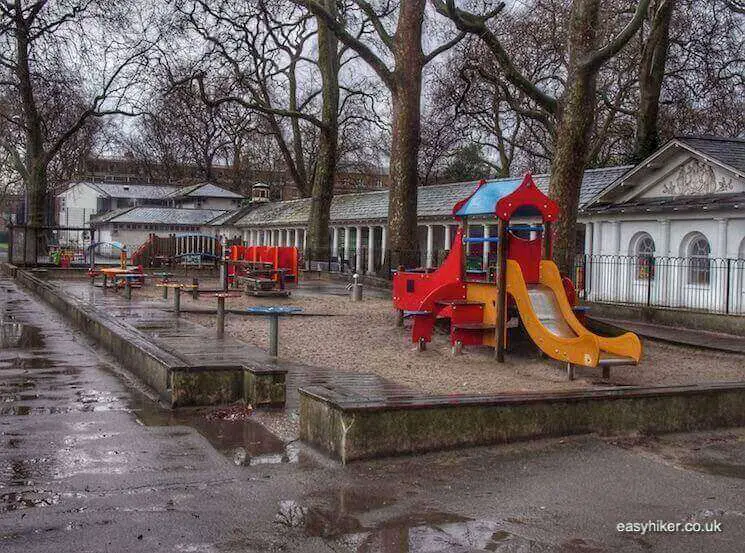Beautiful provincial towns are Italy’s true treasure. Almost every country in Europe has one or two Grade 1 tourist attractions, but only Italy can tempt visitors with a seemingly endless list of Grade B sites, all of which merit a long weekend if not, perhaps, a full-length holiday.
Vicenza is another of these hidden gems …

… but on top of its great beauty, it has something that near-by Treviso – also a “hidden gem” and our previous destination – does not have: it can lay claim to one of the “grand names” of Italian art, the Renaissance genius Andrea Palladio.

Don’t worry if his name does not trip off your tongue as smoothly as those of Michelangelo or Leonardo. This is mainly because Palladio was an architect, and the works of architects do not travel as well as the works of painters and sculptors.
Actually, they do not travel at all: you cannot pack buildings onto a boat and ship them to the king of France or the Getty Museum where they can then be admired by large metropolitan crowds.
Palladio’s buildings are still where he put them: in the towns and countryside of Italy’s Veneto region. But from these provincial surroundings, they have inspired architects all over the world for hundreds of years, and Palladio may be the most influential architect of all time.
What he did, simply put, is this: he “vernacularized” the classical vocabulary. Pillars, domes, colonnades: until Palladio, they mainly graced churches and grand public commissions such as royal palaces.
Palladio scaled them down a dimension or two and used these motives for relatively modest townhouses and country villas.

This recipe was ultimately copied all over the world, but nowhere as much as in the USA: from Thomas Jefferson’s Monticello to “colonial”-style suburban developments, the country would look different if Palladio had not shown the Yanks how to do it.

Palladio was a late developer by the standards of his period and already in his thirties when he designed the first of the buildings for which he was to become famous. A powerful nobleman from Vicenza gave Palladio an opportunity to let his imagination unfold, and after that had turned out pretty well, word-of-mouth ensured that the architect would never be out of work in his adopted hometown.
There must have been job offers from other towns further afield, but, by and large, Palladio stayed faithful to Vicenza – which is why the town and its surrounding countryside can boast a total of more than 50 Palladian buildings.
You are, of course, free to visit them all – about half of them can be found in the relatively compact old town of Vicenza – but, let’s be honest, unless you are really, really into Renaissance architecture, there are other things to see in a pretty town such as this.
And other things to do as well – even if it is only to have a coffee on the piazza and to sit on a bench, enjoying the sunshine.
A Walk to Discover the Beauty of Vicenza
So here is an “essential Palladio” walk, a brief introduction into the maestro’s work, which covers half a dozen of his best-known buildings and which will not take more than a leisurely two hours out of your holiday schedule.
We start in the east of Vicenza’s old town, on the Piazza Matteotti, where the Palazzo Chiericati stands …

… which is half townhouse and half country villa, since it was – at the time of its construction – located in the almost rural setting of a peninsula near the confluence of two rivers.
The original design had been based on two identical floors, but the owners wanted more space for a ball room on the piano nobile, so Palladio – always flexible, always willing to adapt – abandoned his vision and pulled the outer wall forward on the upper floor.
30 years later, Palladio returned to the same piazza to create his final work, the Teatro Olimpico. He again proved to be a master in the art of adjusting his artistic vision to the reality of complicated circumstances when he was given a commission to turn a former prison and ammunition depot into a Roman-inspired indoor theatre.

Visit, if you can, the theatre from the inside: you can still see the backdrop scenery that was created for the opening performance in 1585, believed to be the oldest surviving stage set anywhere in the world.
Continue down the Corso Palladio on your left where many of the great architect’s works are lined up, almost like pearls on a string.
First up is the Casa Cogollo, …

… an excellent example for Palladio’s ability to downscale his classical motives to the size of what is – essentially – a terraced house.
For quite some time, this was believed to have been Palladio’s own residence, because it was so small that art historians could not imagine the maestro would have accepted such a modest commission.
But a commission it was, and Palladio had accepted it, demonstrating that he was not only flexible and adjustable but also decidedly unpicky when it came to dealing with jobs and clients.
A few hundred meters down the road, however, you can see what Palladio could create when he had the means and the support to think and to design on a grand scale.

Or, more accurately, to re-think and to re-design on a grand scale, but because what Palladio did with the Basilica Palladiana on the Piazza dei Signori – generally considered to be his main work – was to unify three existing Gothic buildings, two palazzi and a clock tower, under a new artistic concept.
The exterior galleries, their arched openings and their columns were Palladio’s way of surrounding the core buildings with a new and “modern” outer shell.
He also added many architectural features on the inside …

… and continued to work on the Basilica, on-and-off, for most of his life, collecting an annual salary rather than a fixed fee for his troubles. The project was finally completed 30 years after his death.
Late in his career, Palladio created a visual counterpoint to the elegant Basilica on the other side of the piazza: this is the bulky Loggia del Capitaniato, …

… at the time the seat of the military prefect who ruled Vicenza on behalf of the Venetian Republic. The two buildings contrast each other in almost every possible way, while the Loggia is also a good example for the rich architectural ornamentation which is a typical feature of Palladio’s late style.
From the Piazza dei Signori, we now walk to the Giardini Salvi in the west of the old town, once the private garden of the Valmarana family.
The centrepiece of the garden was the Loggia Valmarana …

… where the aristocratic owner of the property staged parties and formal dinners.
The Loggia Valmarana was, as we know today, not designed by Palladio but probably by one his students, but is nevertheless part of the UNESCO World Heritage Site of Palladio buildings in and around Vicenza.
Quite a few of the buildings on the UNESCO list were, in fact, finished after Palladio’s death, and it is not always easy to determine how much of a hand he actually had in the design of some of the others.
Rather than risking a potentially endless process of discussions of which to buildings to include and to exclude, the UNESCO opted to apply a bold and simple strategy: every building that could in any way be connected to Palladio made the list. You can argue with that approach, but what you cannot do is improve upon its efficiency.
While the Salvini Gardens are a great place to contemplate that issue on a stroll alongside the Seriola Canal, walking past buildings that were certainly not designed by Palladio but just as certainly inspired by his treatment of classical motives, …

… they are an equally great place to just sit on a bench and enjoy your surroundings.

After which you may want to continue your exploration of the town elsewhere.
There is, after all, much else to see in Vicenza, not least a network of rivers and canals which is almost as complicated as Treviso’s – and nearly as picturesque as well.

But wherever you go: in almost every street of Vicenza’s old town, you will meet some of the master architect’s work.
Not all of them can be masterpieces, of course, …

… but all of them reward closer attention.
Go to Vicenza to see and judge for yourself. You will leave with a better understanding of classical architecture and the use of its vocabulary in the Renaissance as well as in modern times.






